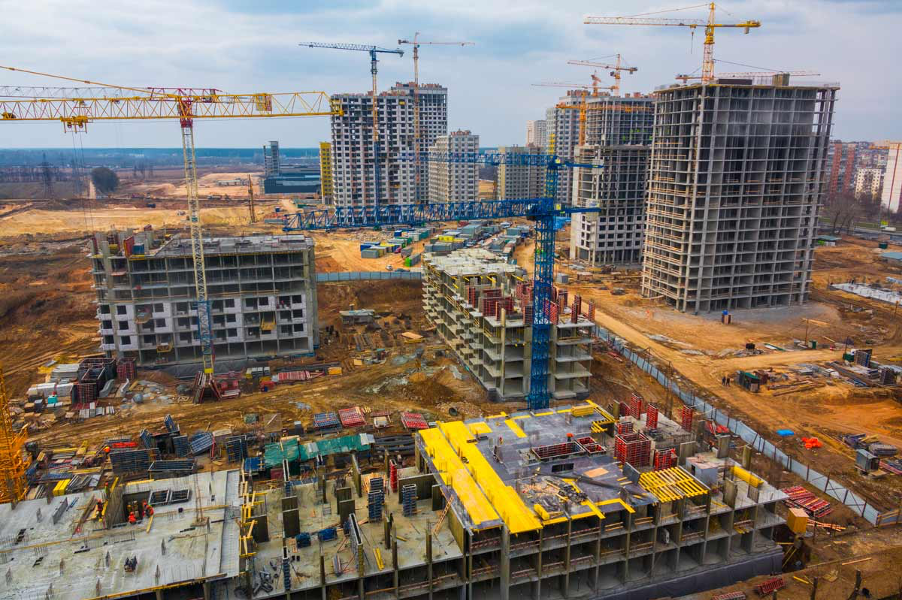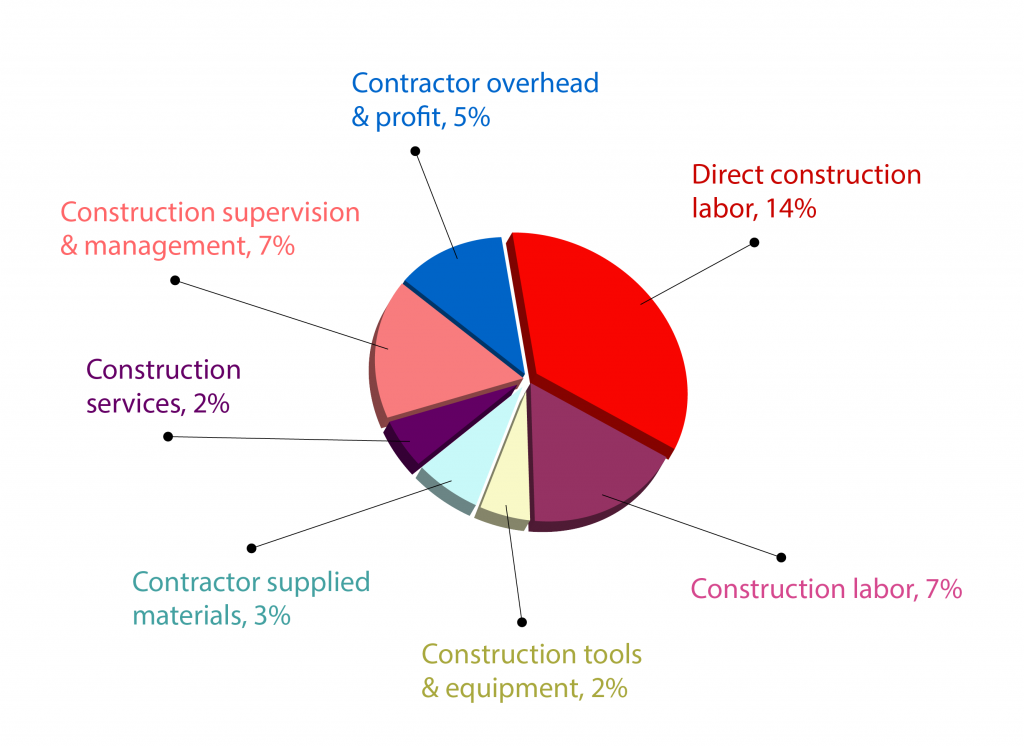
A trickle-down effect of the seemingly never-ending advances in technology is now being seen in industries, such as construction, that traditionally have sometimes been slow to adopt new practices. One important aspect of this is that it has never been easier to better manage your vital on-site assets, like workers, materials, plant and equipment. Aside from the benefits in terms of budgetary control, this also has the added advantages of helping to reduce risk, comply with regulations, and ensure the safety and security of workers.
Drivers for change
In some ways, it is surprising that the construction sector has generally been quite slow to follow the lead of other industries in adopting the wider use of digital tech. But it is clear that the pressure for change is growing ever stronger.
According to MMC, drivers for change towards digitisation in the construction sector are coming from several directions:
- Evolving client expectations – Constructions need to be more individualised, modular, connected to the Internet of Things (IoT) and allow for specific performance tracking, optimisation of energy, and improved security and health parameters, for example.
- New technological capabilities – Sensors and various hardware as well as software have seen costs drop and efficiencies rise over the past few years. There are now more technologies available on the market than ever before.
- New generation of craftsmen and professionals – Tech savviness is spreading in the construction industry. Innovative university curricula are training the younger generations for emerging tech-related jobs.
- Booming start-up environment – Start-ups have taken advantage of the market opportunities induced by some of these trends to fill newly created added-value gaps. However, the long-term impact of the COVID-19 pandemic could see a bumpy road ahead for all sectors of the economy.
- Supportive legal frameworks – Governments, particularly in the Nordic countries and the UK, are increasing their CO2 and energy efficiency regulations and raising their targets. Digitisation provides a great opportunity to reduce the environmental impact of construction projects.
So, there is clear pressure for digitisation in the construction industry. One of the main benefits of this change is the improvement in worksite control that occurs as a result. But why is this control so important?
Worksite control is vital
It is impossible to effectively manage on-site resources for a construction project if the proper controls are not in place. These projects often work with very large budgets and an over-spend of even a fraction of a percent can have serious consequences. Plus, the cumulative effect of numerous apparently tiny over-spends can eventually add up to a significant amount. A company that struggles to keep a grip on project controls is likely to find it hard to remain competitive in this industry.
Another very important aspect of worksite control is to reduce the risks to workers and ensure their safety and security, which is obviously crucial. Failing to comply with health and safety regulations is not a viable long-term option at all. Again, any construction company that cannot keep its workers safe probably won’t stay in business very long.
Controlling your on-site resources effectively and implementing a feedback loop will increase transparency throughout the entire project management. And, above all, it will also help to avoid problems and accidents, which will increase trust between workers, site management and the office.
What are the main resources used in construction?
The three main resources in terms of cost are usually workers, materials, and plant and equipment. A breakdown of the typical budget for the construction of a house in the US is shown below. The percentages can vary between projects and between countries, as well as the method of reporting materials and/or plant and equipment, but it is clear that these resources normally represent the majority of the budget.
Gaining the trust of stakeholders
One of the main challenges for a site manager who wants to ensure the smooth running of a project is to gain trust from both the site workers and the office. The communication methods that are used and the way that new processes are set up to allow two-way collaboration will clearly have a big impact on project productivity – getting these aspects right will have a massive effect in terms of the budget and also safety and security.
Looking after the safety and security of your staff and also subcontractors on-site is a fundamental part of project management. From a financial perspective, failing to do this can result in very substantial fines – for example, in the UK in 2018, the Health and Safety Executive (HSE) fined Costain and Galliford Try £2.8 million after a worker’s toes were amputated in an accident on-site and there have also been many other similar fines.
This sort of accident will have a catastrophic impact not only on the individual involved but also in terms of the company’s reputation, which can negatively affect loyalty from all stakeholders, especially on large sites with many subcontractors.
Project leaders have the ability to change old and outdated practices and mindsets, but they need the right digital tools to do so. The good news is that improving construction site safety and security is now much easier than ever before, thanks to the use of digital technology such as smartphones, apps and related software. When this is successful, it leads not only to satisfaction but also to better overall project performance and profitability. Some countries, like the UK, have been quicker to start using this technology, but there are signs that other countries are now following suit.
Using digital tools to control projects
As a general message, taking better decisions regarding your resource management via the use of digital tools will increase site profitability. This could be in terms of ensuring that workers have the correct skills, qualifications and safety training, or tracking the usage and security of plant and equipment.
In more detail, there are many specific benefits of using digital tools on construction projects. They can help to avoid accidents by ensuring compliance with safety processes via rules and programs for your site resources – this is one of the most fundamental aims of any successful construction project. To achieve this, there are at least 5 digital tools that a project manager might find useful.
The security of a construction site can also be improved with the help of technology. Thefts from site are costly in terms of lost time and money, and thieves are using ever-more creative ways to access a site and remove property. The days of a few chains and padlocks providing adequate security are long gone, but the good news is that digital technology is a very potent weapon with which to fight back.
On a more general level, digital tools can be used to improve the feedback culture in the construction industry. Effective communication can be problematic in any industry, but, perhaps more than most, the construction sector has the scope for developing a better culture of feedback between not only the client, contractor and sub-contractors but also management and workers. In time, this should result in higher levels of client satisfaction, which in turn will enhance the reputation of the contractor and also lead to better retention of staff.
Digital tools can make it very easy to accurately calculate your productive labour yield by efficiently collecting site resource data. As the old saying goes: “If you can’t measure it, you can’t improve it.” Traditional methods of data capture are often full of inefficiencies and potential sources of error – digital technology can hugely simplify and speed up this process.
The net result is that you will be able to better manage your construction assets and therefore also take decisions that are better informed. Information has never been more powerful and a company that has real-time access to valuable data will be in a position of strength.
Barriers to a digital transformation?
Change isn’t always easy in any walk of life and it’s often claimed that switching from well-established ways of working in the construction industry is especially difficult. Potential barriers to adopting digital technology might include:
- The belief that more work will be created because the tools are not integrated into existing ways of working.
- Digital tools are thought to be too complex.
- It is sometimes considered that the construction industry is too risk-averse and workers simply don’t want to use digital tools.
- The failure to appreciate the actual return on investment of digital tools, not just the time saved.
Luckily, it is increasingly clear that these ‘barriers’ can be overcome relatively easily or maybe don’t even exist any more. A proper, well-developed and thought-out strategy with coherent planning and management can ease the implementation of digital tech into a business. People are using digital tools in their private lives more than ever and therefore they are likely to be more open to using the same sort of tech at work. And the construction industry is finally starting to grasp that digital tech can help with aspects such as budgetary control and ensuring the safety and security of its workers, which is bound to make any company sit up and take notice.
In fact, things have now progressed to the stage where, according to MMC, “… launching a new [digitalization] strategy is not really an option, it has now become unavoidable. Digitalization is currently in a process of reinventing the construction industry, triggering an overall value migration from the central construction part of the value chain up to the engineering and design function and down to facility management and operations’ services.”
The take-home point is that many construction companies are now using digital tech in their business, proving that it is viable and has tangible benefits such as saving money as well as time. If they can do it, why can’t you?
Helping you to use digital technology
Digital tools are increasingly being used in all industries and so it is inevitable that construction is finally going the same way. However, this change should be embraced, not feared, because the benefits can have a major impact on project profitability and the safety and security of workers. There are many different aspects to incorporating digital tools into your processes and here at Traxxeo we will be happy to discuss how we can help you with this.
